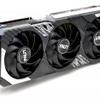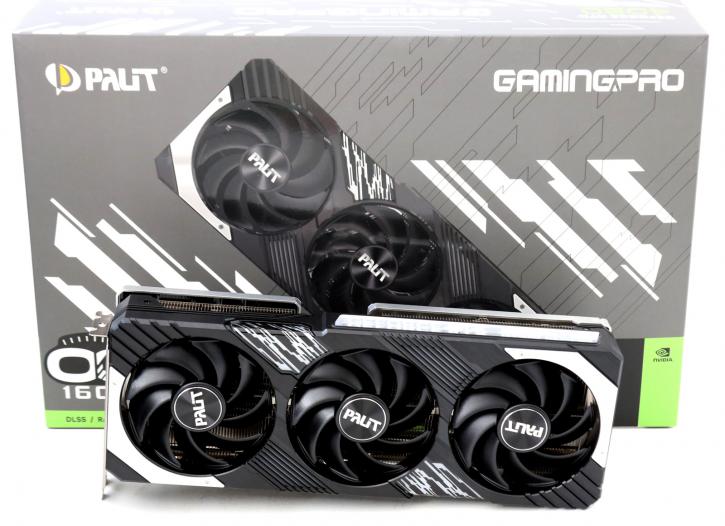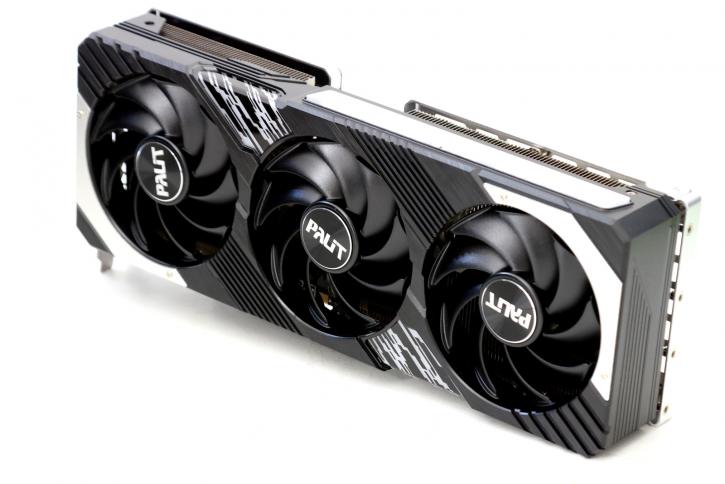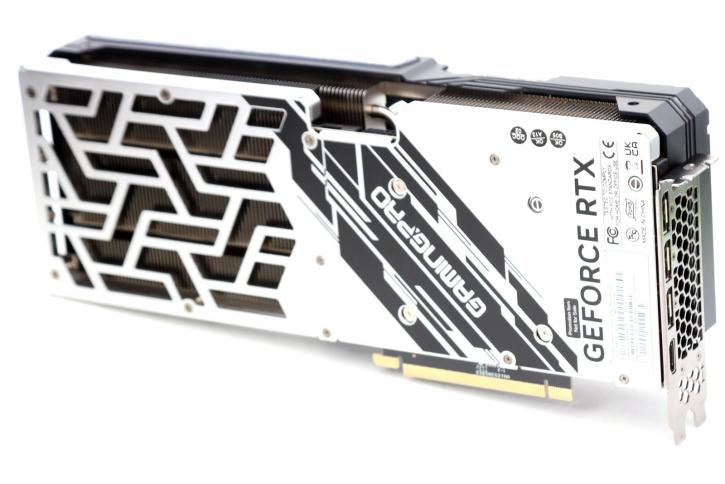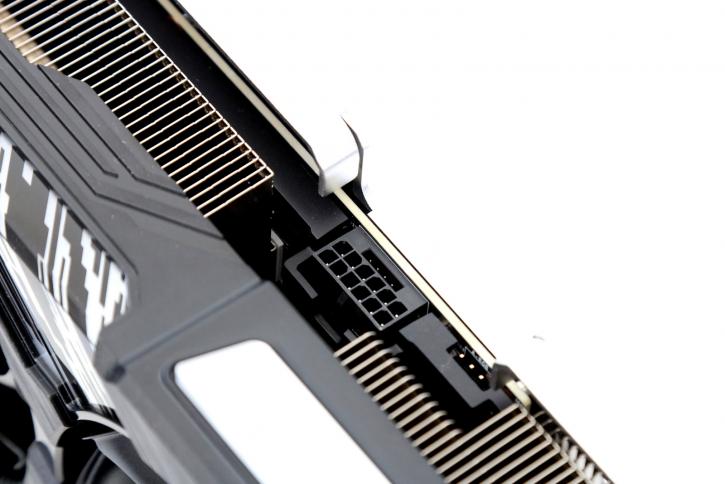Product photos
Product Photos
The graphics card in question is frankly a sight to behold. Its gleaming and dazzling appearance is sure to catch the eye of any enthusiast. Despite its flashy exterior, however, it is also a formidable performer. The card boasts a attractive shroud, complete with a massive cooler that is sure to keep it running at optimal temperatures. Do not let the flashy appearance fool you; this card is a serious contender in the world of graphics cards. In the following pages, we will provide you with photos that showcase the looks and power of this piece of hardware.
At 33cm long and 67mm deep this handwrought behemoth is big. The grey and black design should be easy to spot because it is mostly the same as the RTX 4090 model, and Palit has done a good job of making it look stylish despite its size; it needs a big 3-slot design. Regarding the construction of their cooler, Palit uses an ingenious combination of metal plates on plastic to achieve a premium look and feel. Different tones of gray complement the black blades of the fans. A sturdy metal backplate is included.
The ADA series will replace the Ampere lineup, which will be phased out of the market as these cards are priced similarly but are significantly quicker. GeForce RTX 3080 Ti was equipped with 10240 stream/Shader processors, and the GeForce RTX 4080 kicks in at 9728 shading cores whilst being significantly faster. The GPU boost frequency has been increased to at least 2,640 MHz in gaming, but you'll likely see it hovering in a 2825 MHz domain. The TDP of the RTX 4080 rises to 300~325 watts while remaining within the parameters of the 12VHWPR dual wires, which will be utilized on this model instead of four 8-pin connections. Multiple lighting zones allow for complete customization.
For its Ada architecture, NVIDIA pioneered the idea of using two separate NVDEC and NVENC Codecs. This means you can encode and decode two video streams simultaneously, or a single stream at twice the frame rate, thanks to the presence of two sets of hardware-accelerators. Not only does the latest 8th Gen NVENC speed up encoding in HEVC, but it also does so in AV1. You also get a "optical flow accelerator" that can figure out the frames in between to make video playback more seamless. In DLSS 3, frame generation is performed by the same piece of hardware as before.
The backplate for the RTX 4080 Ti GamePRO GPU is busy. What excites me the most is the well-ventilated space towards the back of the card. We have an nice graphical image with the GamPRO logo spanning most of the backplate. I am unsure how I feel about the backplate's stickers and FC/CE information. While I understand that most of this is necessary by law, most other GPU makers find a way to accomplish it without putting it on the backplate.
Despite conforming to PCIe Gen 5 specifications, the GeForce RTX 4090 employs a PCIe Gen 4.0 x16 host interface. GeForce RTX 4080 is equipped with 16 Gigabytes of GDDR6X memory, which operates at 22.4 Gbps (effective data rate). This provides a substantial amount of volume and bandwidth combined it's 256-bit wide memory bus. With a 325W+ TGP, we advise a 750 Watt power supply as a minimum. Realistically through with the founder edition card, we did not hit that value. You're looking at roughly 275-300 Watts, which is significantly lower than the Radeon RX 6900X and GeForce RTX 3090. The board partners, however, have more TGT allowance; there's where the card will jump in Wattage, especially when you open up the power limiter.
